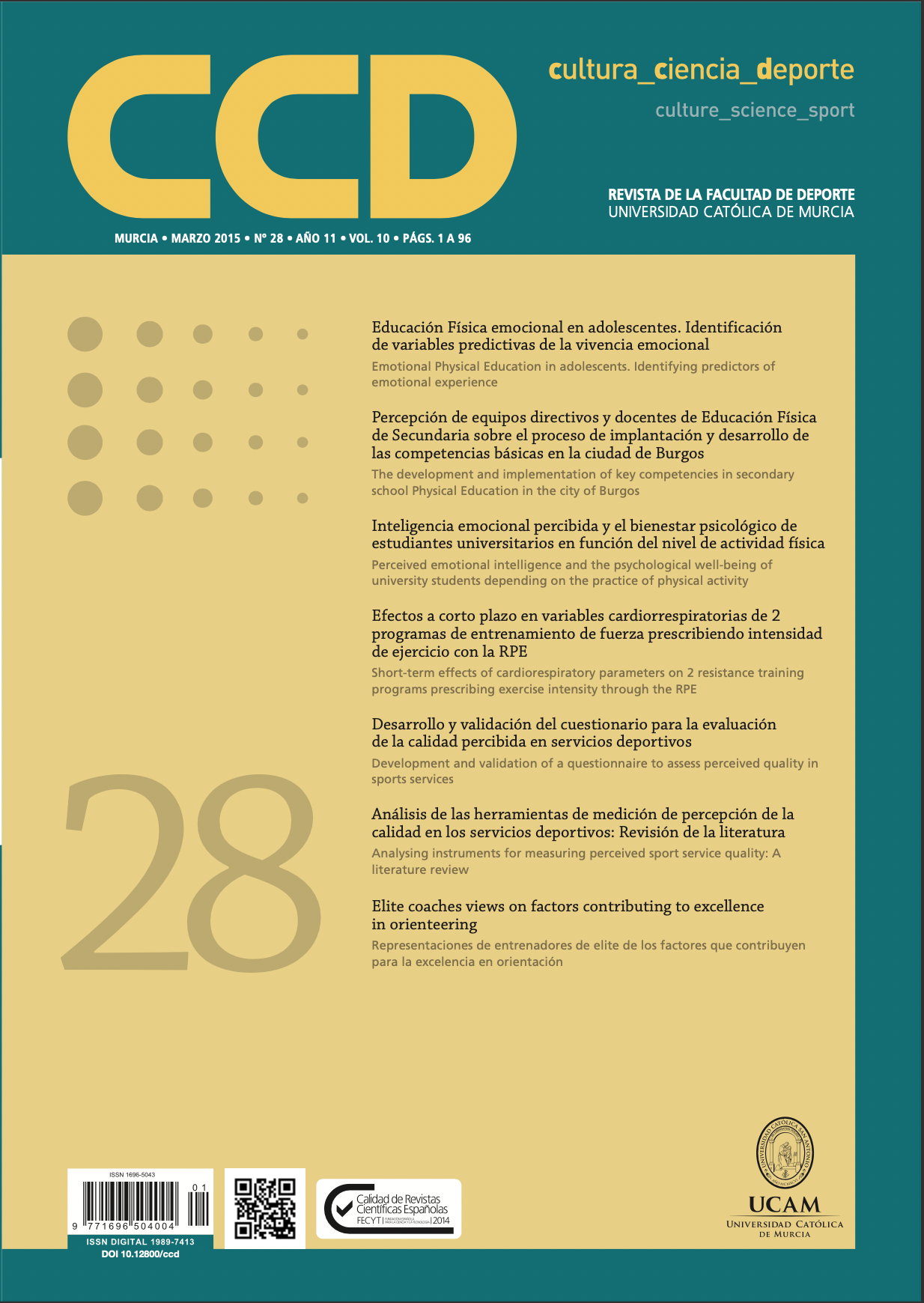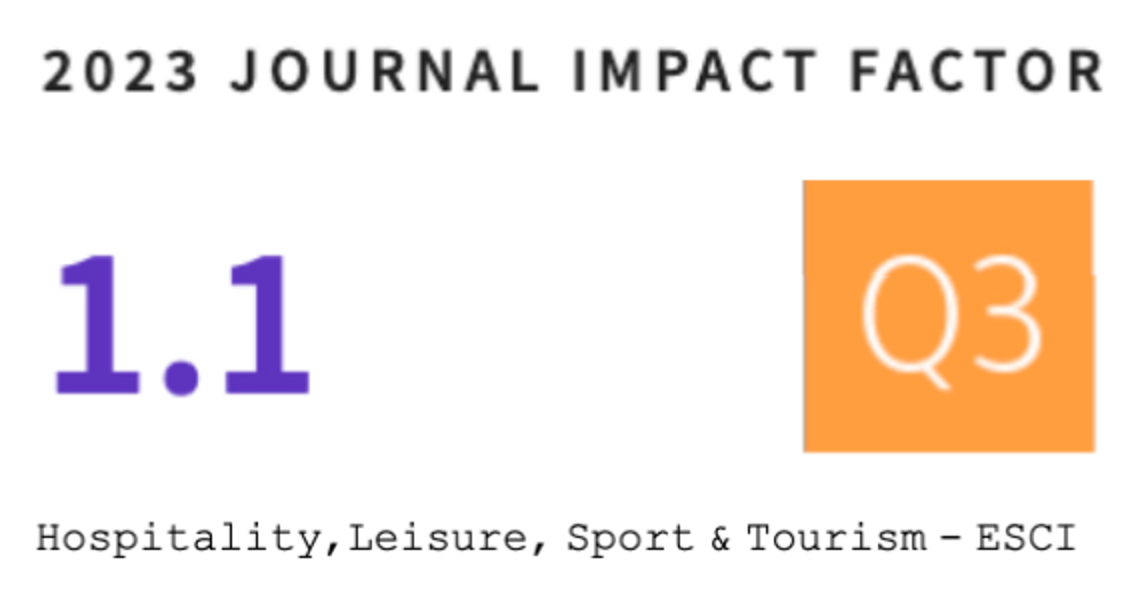Educación Física emocional en adolescentes. Identificación de variables predictivas de la vivencia emocional. (Emotional Physical Education in adolescents. Identifying predictors of emotional experience).
DOI:
https://doi.org/10.12800/ccd.v10i28.511Abstract
http://dx.doi.org/10.12800/ccd.v10i28.511
Los juegos deportivos son recursos pedagógicos de primer orden cuando se trata de educar competencias emocionales orientadas a la mejora del bienestar socioemocional del alumnado. Esta investigación examinó la capacidad predictiva de seis variables dominio acción motriz (familia de juegos), competición (presencia o ausencia), género (masculino y femenino), tipo de emoción (trece emociones organizadas en positivas, negativas y ambiguas) e historial deportivo (con o sin historial) para explicar la intensidad emocional suscitada en la práctica de juegos deportivos. Participaron 220 estudiantes de ESO y Bachillerato de 5 centros educativos de las regiones de Cataluña y Valencia. Se realizaron 2 sesiones con juegos con o sin competición de los cuatro dominios de acción motriz. Tras finalizar cada juego los alumnos respondieron la escala validada Games and emotions Scale (GES) para identificar la intensidad de trece emociones básicas. El análisis de los datos se realizó mediante la técnica estadística de árboles de clasificación. Entre los hallazgos obtenidos destacamos: los juegos deportivos generan intensidades elevadas de emociones positivas. El tipo de juego (dominio) y la competición son las principales variables predictivas de la alegría, el humor y la felicidad. Las emociones negativas registraron los valores menos intensos. La competición (derrota) y el historial deportivo (disponer de antecedentes deportivos) fueron las principales variables predictivas de la ira y la ansiedad. El género (chicos) y el historial deportivo (con historial) fueron las principales variables predictivas del rechazo. Este estudio aporta criterios sobre la utilización del juego deportivo en programas de educación física emocional en adolescentes.
Palabras clave: Educación secundaria, juego deportivo, emociones, árboles de clasificación.
===
Abstract
Sports games are first-rate teaching resources in relation to the education of emotional skills used to improve the socio-emotional welfare of students. This research tested the predictive capacity of six motive action domain variables (family of games), competition (presence or absence), gender (masculine or feminine), type of emotion (thirteen emotions classified under positive, negative and ambiguous) and sporting history (with or without records) to explain the emotional intensity achieved by sports games practice. Two hundred and twenty students of ESO and Bachillerato from 5 schools in Catalonia and Valencia took part in the study. Two sessions with games with or without competition of the four motive action controls were carried out. After finishing each game, the students answered the validated Games and Emotions Scale (GES) to identify the intensity of thirteen basic emotions. The analysis of the data was made using the classification tree statistical method. Key findings highlight that sports games generate a high intensity of positive emotions. The type of game (control) and competition are the main predictive variables of joy, mood and happiness. Negative emotions were recorded to be less intense. Competition (defeat) and sporting history (having a sports background) were the main predictive variables of anger and anxiety. Gender (boys) and sporting history (with record) were the main predictive variables of rejection. This research provides a useful criteria for using sports games in emotional physical education plans with teenagers.
Key words: Secondary education, sports games, emotions, chaid classification trees.
Downloads
How to Cite
Issue
Section
License
The authors who publish in this journal agree with the following terms:
- The authors retain the copyright and guarantee the journal the right to be the first publication of the work as well as licensed under a Creative Commons Attribution License that allows others to share the work with recognition of the authorship of the work and the initial publication in this journal.














